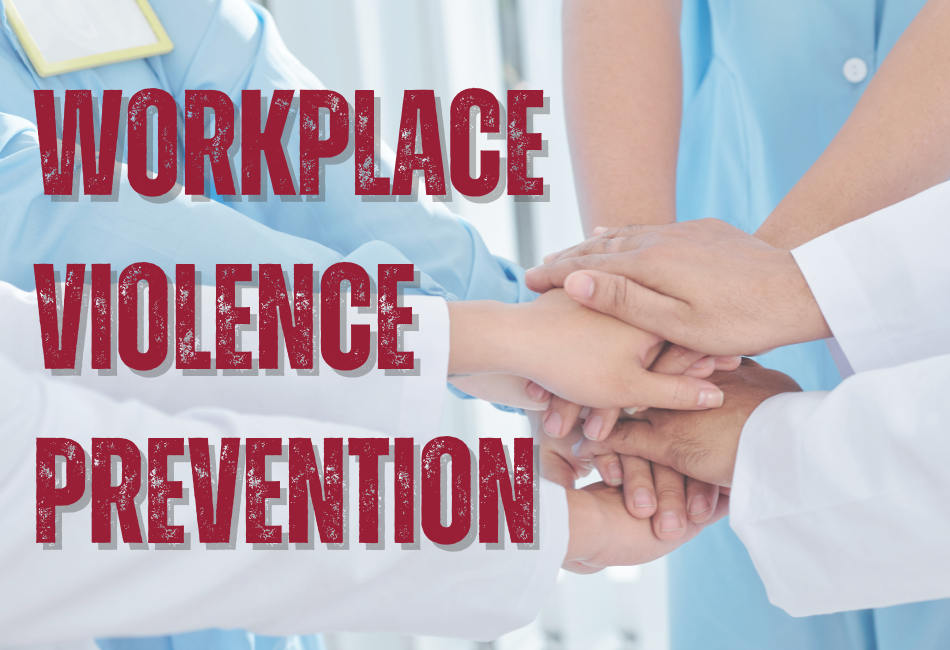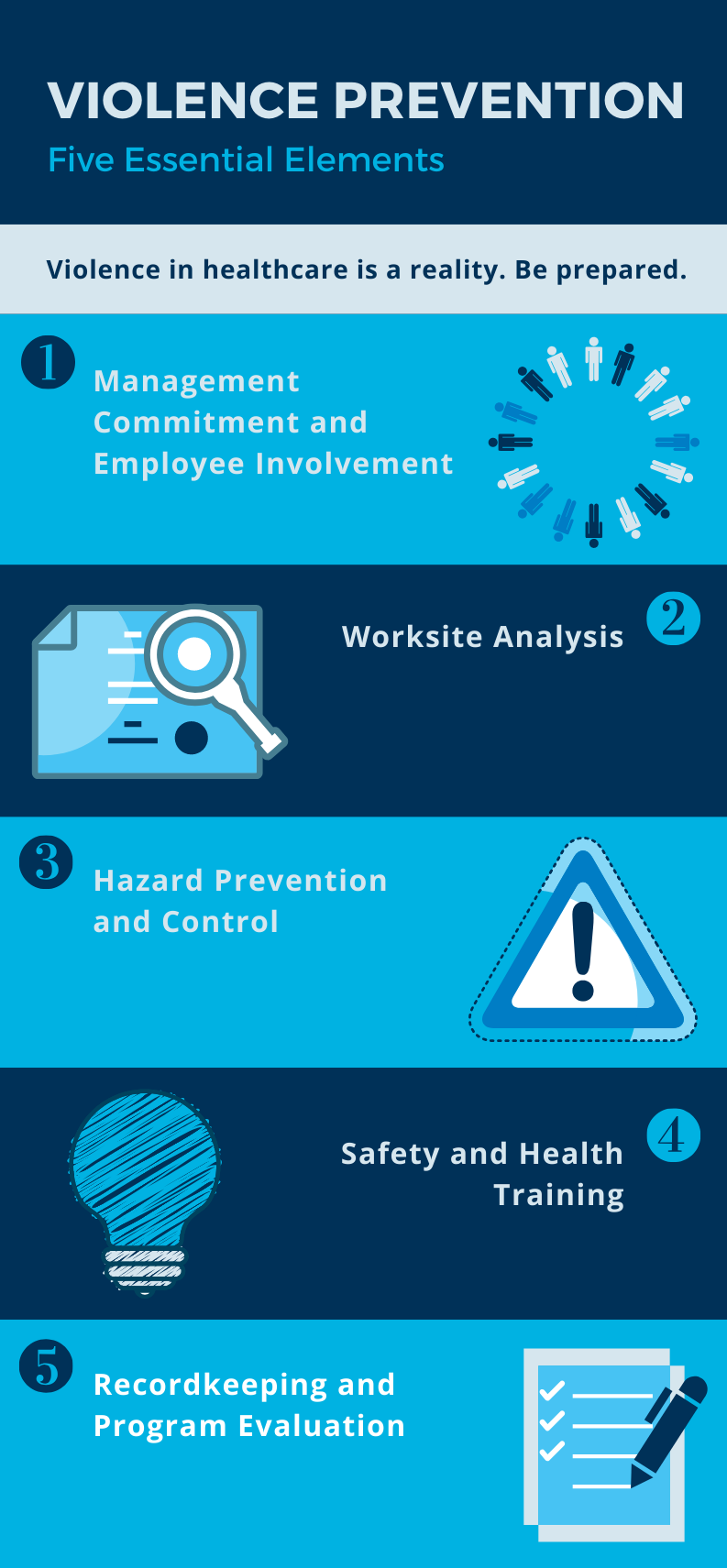Assessing the Influence of Workplace Culture on the Success of Physical Violence Avoidance Efforts and Worker Well-Being
The intersection of workplace society, physical violence avoidance efforts, and worker wellness warrants careful examination, as these aspects collectively influence organizational success. A society that focuses on open interaction and emotional security can equip employees to recognize and report prospective dangers, thus fostering an environment for both psychological health and wellness and reliable physical violence avoidance techniques. The subtleties of exactly how these variables interact stay intricate and complex. Recognizing the certain mechanisms at play can disclose critical insights that might inform future campaigns and drive significant modification within organizations. What underlying characteristics might be influencing these outcomes?
Understanding Workplace Culture
Often, workplace society works as the foundation for worker communications and total organizational behavior. It incorporates the shared values, ideas, and methods that shape the environment in which staff members operate. A favorable workplace society cultivates collaboration, respect, and open communication, while an unfavorable society may reproduce stress, distrust, and hostility. Recognizing workplace culture is critical for organizations aiming to implement effective physical violence prevention methods.

Organizations must assess their existing work environment culture to determine locations for improvement. This evaluation can include surveys, focus groups, or individually conversations. By acknowledging the cultural characteristics at play, companies can execute targeted interventions that promote a safer and much more considerate job environment, eventually reducing the danger of physical violence in the work environment.
Function of Worker Health
A favorable office society not just affects organizational actions but likewise significantly effects worker health. When staff members really feel valued and valued, their overall job contentment rises, leading to boosted psychological and psychological health and wellness. This, consequently, promotes a sense of belonging and commitment, which is important for long-lasting engagement and productivity.
Moreover, an encouraging cultural setting promotes open communication, enabling staff members to seek and express problems aid without worry of stigma. This visibility is essential in resolving problems connected to stress and anxiety, fatigue, and social conflicts, which can detrimentally impact both specific wellness and organizational consistency.
Additionally, companies that focus on staff member well-being often see lowered absenteeism and turn over prices. Healthy employees are a lot more resilient and much better geared up to handle workplace obstacles, contributing to a much more effective and stable workforce.
Purchasing employee well-being with initiatives such as health cares, psychological health sources, and adaptable working setups can create a positive comments loophole, boosting both individual satisfaction and cumulative business success (california workplace violence prevention). Inevitably, prioritizing staff member wellness is not merely an ethical imperative; it is a critical approach that benefits the whole company
Physical Violence Avoidance Methods
Carrying out reliable physical violence prevention techniques is important for keeping a safe and healthy workplace setting. Organizations has to take on an extensive technique that consists of policy development, staff member training, and proactive communication. Establishing clear office violence policies is the very first step, making sure that all employees comprehend appropriate habits and the repercussions of infractions.
Training programs need to be designed to educate employees concerning identifying indication of prospective violence, problem resolution strategies, and emergency situation action treatments. Normal drills and simulations can boost preparedness, fostering a culture of recognition and liability.
Furthermore, promoting open communication channels encourages employees to report problems without concern of retaliation. This can be helped with through confidential reporting systems or regular responses sessions. Furthermore, advertising an encouraging work environment culture that values regard and inclusivity can substantially minimize the danger of violence.
Organizations ought to likewise take part in normal assessments of their workplace society and violence prevention techniques, adjusting them to developing demands. By prioritizing these approaches, firms not only protect their staff members but likewise boost total wellness, inevitably site link adding to an extra efficient job atmosphere.
Gauging Cultural Effect
Gauging the effect of workplace society on physical violence avoidance efforts is important for comprehending the effectiveness of present methods and identifying locations for improvement - california workplace violence prevention. To attain this, companies must utilize a diverse strategy that integrates qualitative and quantitative techniques. Surveys and evaluations can gather data on employee understandings of office safety, assistance, and inclusivity systems, while case records provide concrete evidence of physical violence events and their context within the business culture
Additionally, emphasis teams and meetings can expose much deeper understandings into workers' experiences, mindsets, and beliefs surrounding physical violence avoidance efforts. Evaluating this qualitative data aids companies to identify cultural toughness and weaknesses that may either promote or prevent efficient prevention approaches. Benchmarking against sector requirements allows for relative analysis, helping organizations assess their performance loved one to peers.

Creating Supportive Settings
Often cultivating a supportive atmosphere within the office is vital for efficient violence prevention. Such atmospheres equip staff members to interact openly concerning their experiences and concerns, consequently recognizing possible concerns before they escalate. here are the findings A culture of assistance improves trust among group members, motivating cooperation and positive analytic.
To produce an encouraging setting, companies have to focus on training programs that concentrate on conflict resolution, emotional knowledge, and energetic listening. These abilities furnish employees to handle social partnerships constructively, lowering the possibility of misunderstandings that could result in violence - california workplace violence prevention. Additionally, carrying out mentorship programs can give staff members with assistance and confidence, adding to their general wellness
Management plays a critical function fit a supportive workplace society. By modeling understanding actions and showing a dedication to worker well-being, leaders set a tone that motivates others to adhere to fit. Routine feedback mechanisms, such as anonymous studies, can likewise assist assess staff member view and emphasize locations for improvement.
Inevitably, an encouraging environment not only alleviates the risk of physical violence yet additionally enhances worker spirits, job fulfillment, and productivity, reinforcing the organization's commitment to promoting a safe and thriving workplace.
Final Thought
A positive workplace society dramatically influences both physical violence avoidance initiatives and staff member well-being. By fostering open communication and encouraging the reporting of worries, companies can improve psychological wellness and task complete satisfaction amongst employees.
The crossway of workplace culture, violence prevention efforts, and staff member well-being warrants careful evaluation, as these components jointly affect organizational success. A society that prioritizes open interaction and mental safety can empower staff members to identify and report prospective dangers, therefore cultivating a setting favorable to both psychological health and wellness and reliable physical violence avoidance methods.A favorable workplace culture not just influences business behavior but also substantially effects staff member wellness. Surveys and assessments can gather information on staff member assumptions of office inclusivity, safety, and support systems, while case records supply concrete evidence of violence incidents blog and their context within the business culture.
A positive office society considerably affects both physical violence avoidance initiatives and employee well-being.